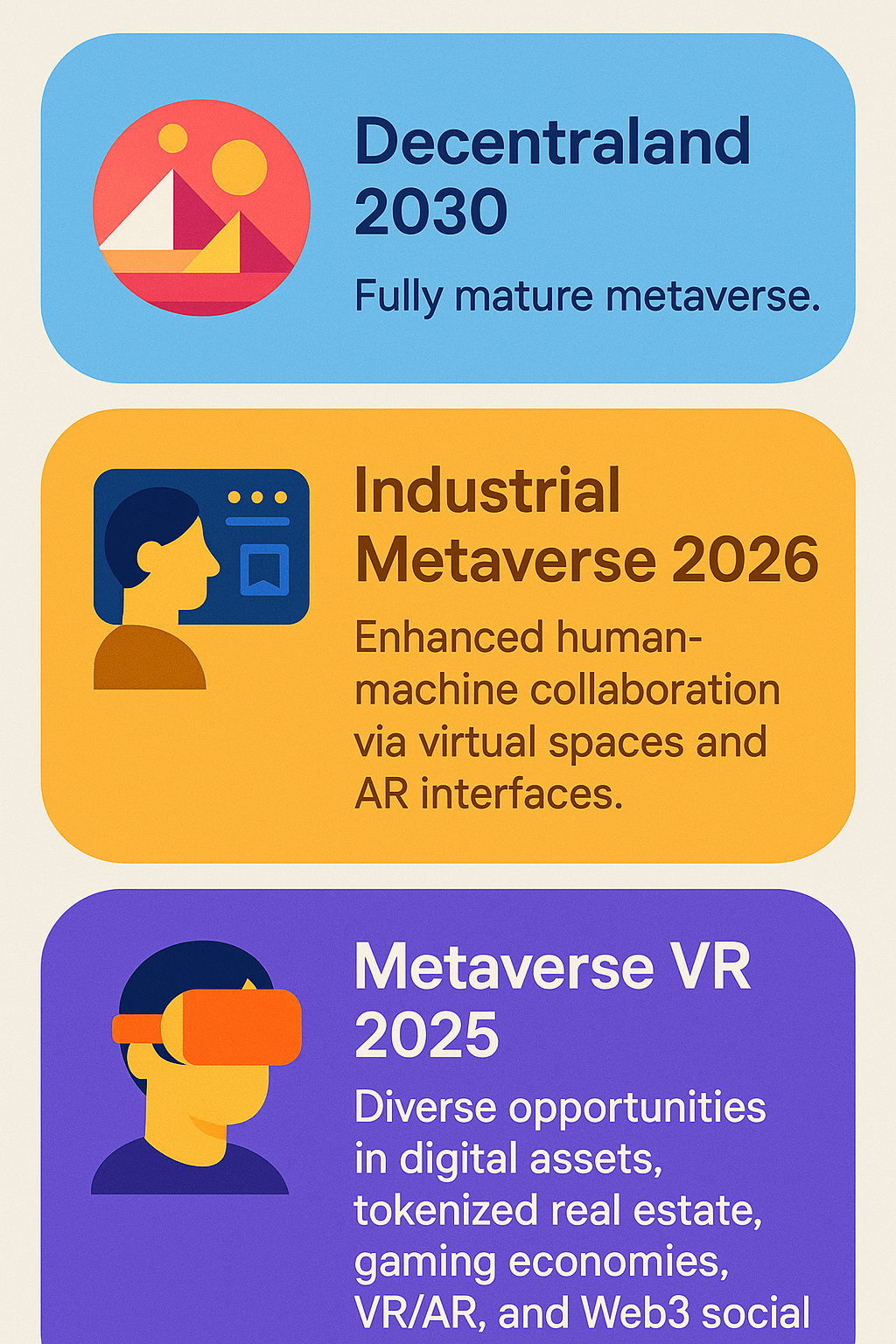Global Scans · Immersive & Augmented Worlds · Signal Scanner
The Emerging Wave of Metaverse Interoperability: A Weak Signal Set to Disrupt Multiple Industries
The development of metaverse interoperability—that is, the seamless connection and interaction across multiple virtual environments—is an emerging trend with potentially transformative effects on industries ranging from retail to training and beyond. While the concept of a unified metaverse has been discussed for years, recent signals indicate that true interoperability within the next five years could disrupt current digital economies, social platforms, and enterprise applications, creating both opportunities and challenges that strategic planners need to understand today.
Introduction
Metaverse ecosystems are moving from isolated virtual environments toward interoperable networks where users, assets, and experiences flow freely. This evolution presents a foundational shift that could redefine digital property, user identity, commerce, and social interaction. Emerging developments in blockchain-based ownership, cross-platform protocols, and extended reality (XR) integrations suggest a near future where the metaverse resembles a vast, interconnected digital universe rather than disparate silos. This quick take examines the weak but growing signals around interoperability, the drivers behind them, and their potential to disrupt multiple sectors.
What’s Changing?
Several recent developments underline the shift toward metaverse interoperability as a burgeoning trend. First, the maturation of blockchain technologies and non-fungible tokens (NFTs) is enabling digital assets with verifiable ownership to move across platforms, potentially turning virtual real estate and goods into genuinely portable commodities. As noted in projections for Decentraland—a leading blockchain-based virtual world—its evolution toward a fully mature metaverse by 2030 hinges on its ability to interconnect with other virtual spaces (Decentraland long-term outlook).
Meanwhile, the forecast for immersive technologies, especially virtual reality (VR) and augmented reality (AR), suggests that they will be increasingly integrated into interoperable metaverse platforms rather than standalone experiences. VR’s expected $5 billion market size by 2027, driven largely by corporate training centers, highlights XR’s growing utility beyond gaming or social contexts (Extended reality market growth).
At a macroeconomic level, the metaverse economy could swell to as much as $5 trillion by 2030, with retail emerging as a key beneficiary. This anticipated growth depends critically on users’ ability to move across virtual environments while maintaining identity, assets, and relationships—a condition only met through true interoperability (Metaverse-driven retail economy).
Importantly, industry leaders have started recognizing the urgency of interoperability. Predictions state that over the next three to five years, we will see practical frameworks and standards that enable diverse metaverse platforms to communicate and share data in real-time (Metaverse interoperability emergence).
Why is This Important?
Interoperability could bridge the gap between fragmented virtual economies and a truly unified digital ecosystem. Currently, many metaverse platforms operate as isolated silos, limiting user experience and stifling innovation. If users could transport avatars, digital assets, and social connections between metaverses without losing value or encountering compatibility barriers, it would catalyze new business models and create fluid digital marketplaces.
Retailers, for example, may use interoperable metaverses to offer products not only in multiple virtual worlds but also to enable customers to retain purchased digital goods regardless of platform changes. This could reshape online shopping and brand engagement, turning virtual goods ownership into a permanent, cross-platform asset rather than a confined experience.
Additionally, enterprises utilizing VR for training and collaboration could leverage interoperability to share scenarios, content, and data across departments or with partners, enhancing efficiency and reducing redundancy. This would foster a collaborative ecosystem and reduce vendor lock-in, which currently limits adoption.
From a societal perspective, interoperability may influence digital identity management by enabling users to maintain a single persistent presence across metaverse spaces. This capability could prompt new standards around privacy, data security, and ethics, as users navigate identity verification beyond geographic and platform boundaries.
Implications
The rise of metaverse interoperability carries significant implications for multiple stakeholders:
- Businesses and retailers: Must prepare for new commerce models where virtual goods have lasting cross-platform value. This entails investing in cross-metaverse digital assets and reconsidering digital rights management strategies.
- Technology developers: Need to build standards-driven platforms and protocols that facilitate interoperability, focusing on security, scalability, and user experience without compromising proprietary interests.
- Governments and regulators: Should anticipate emerging challenges around digital asset ownership, taxation, and identity verification across jurisdictional lines. Proactive frameworks will be required to address liability and consumer protection in a stitched virtual environment.
- Users: Will benefit from greater freedom and control over their digital presence but may face new risks related to privacy, data fragmentation, and platform governance.
Strategic planners should consider interoperability as a near-term trend likely to expand beyond niche use cases. Early movers might explore partnerships that enable cross-platform asset transfer, experiment with interoperable product offerings, or pilot interoperable training modules to gain competitive advantages.
Questions
- What standards or protocols can ensure secure and seamless interoperability across disparate metaverse platforms?
- How can businesses leverage interoperability to create persistent digital assets without losing control over intellectual property?
- What privacy and security challenges arise from a persistent digital identity roaming multiple virtual worlds?
- How might this trend disrupt existing business models in retail, training, and social networking?
- What regulatory frameworks will be needed to govern asset ownership and transactions in an interoperable metaverse?
- How can organizations prepare workforce skills for XR platforms interconnected by interoperability?
Keywords
metaverse interoperability; virtual reality; augmented reality; non-fungible tokens; blockchain; digital asset ownership; extended reality; virtual commerce
Bibliography
- Decentraland long-term outlook. CryptoRank. https://cryptorank.io/news/feed/77f31-decentraland-mana-price-future
- Extended reality market growth. Advanced Manufacturing. https://www.advancedmanufacturing.org/technologies/software-update/extended-reality-the-next-tech-revolution/article_ee06442b-eaf3-4e63-a8d8-930d78996a52.html
- Metaverse-driven retail economy. IanKhan.com. https://www.iankhan.com/retail-reimagined-my-2035-predictions-as-a-technology-futurist/
- Metaverse interoperability emergence. IanKhan.com. https://www.iankhan.com/the-metaverse-revolution-what-business-leaders-need-to-know-now-2025-edition-3/
